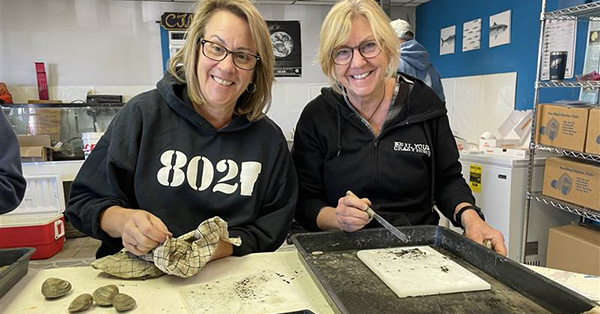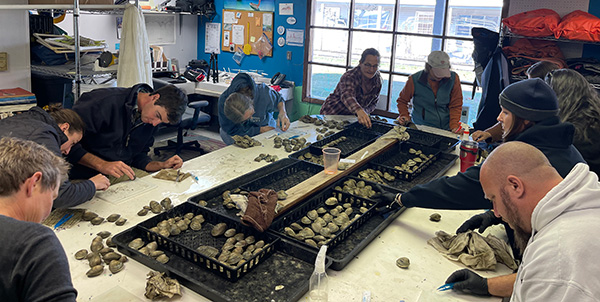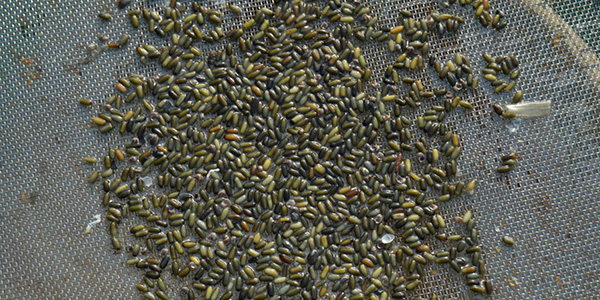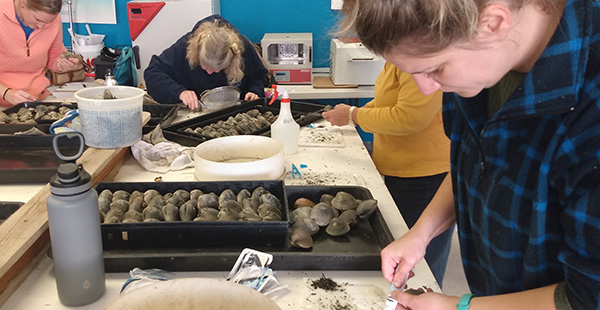by Lindsay Skedgell, ecological communications specialist

If you were swimming in Long Island Sound before the 1930s you may have felt something brush upon your leg. It would have been green and long and flowing, almost like a ribbon in the sea. It would have been a home to many species of fish and a breeding ground for them. It would have kept the Sound’s water at a balanced, cooled temperature and purified it, an important element of a larger estuary.
Growing along the bottom of the Sound, across the shoreline of the states of Connecticut and New York, eelgrass was in abundance. Tall, spindly, green seagrass spread, providing numerous benefits to the Sound’s ecosystem such as stabilizing sediment, reducing the intensity of wave impact, and eliminating excess nitrogen in the water. In 1931, a fungal disease spread throughout the population, leading to what would become known as wasting disease epidemic, causing eelgrass to rapidly decline.

The decline began in high salt waters, then spread through brackish. Many waited, but eelgrass never returned to most areas in which it was once thriving. Only the eastern Sound in Connecticut and New York’s North Fork of Long Island, Plum Island, and Fishers Island have sparse populations of eelgrass that have returned. 1,465 acres of eelgrass remain in Long Island Sound overall, the global population of which decreases by 7% daily.
The effort to help revitalize eelgrass populations in Long Island Sound has been led by Save the Sound, Save Environmental, Connecticut College, UCONN and Remote Ecologist for more than a year.
“Eelgrass is a foundational species,” our Soundkeeper and key project organizer, Bill Lucey, says. “Eelgrass is the habitat that’s supposed to be here and it’s not.”


As part of the project, 50 volunteers gathered in Clinton in November, to glue thousands of eelgrass seeds delicately onto clam shells. As an angiosperm, eelgrass produces its seeds asexually through self-driven germination. Those seeds are then collected from remaining populations and glued, one by one, to clam shells which are released back into the Sound.
“Eelgrass has a symbiotic relationship with shellfish. If the shellfish is healthy, the eelgrass is healthy,” Lucey says. Gluing eelgrass seeds to clams activates biomimicry, allowing clams to help bury the seeds in the seafloor.
Next June, the eelgrass seeds will sprout underwater. Their stewards will snorkel beneath the Sound to check on them, drones hovering over the meadows to document their dive. One day, eelgrass may mimic its growth of nearly one hundred years ago. One day starts with a seed.
